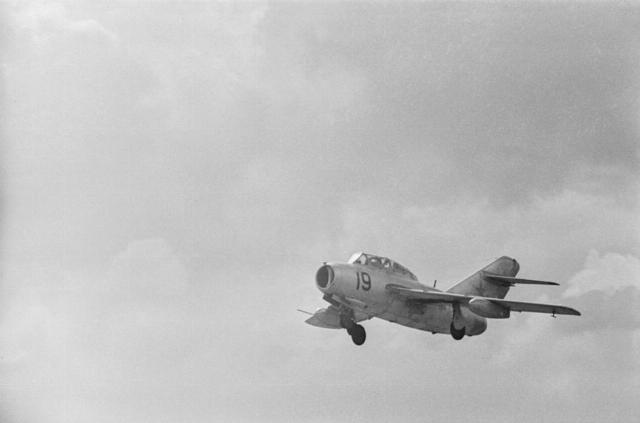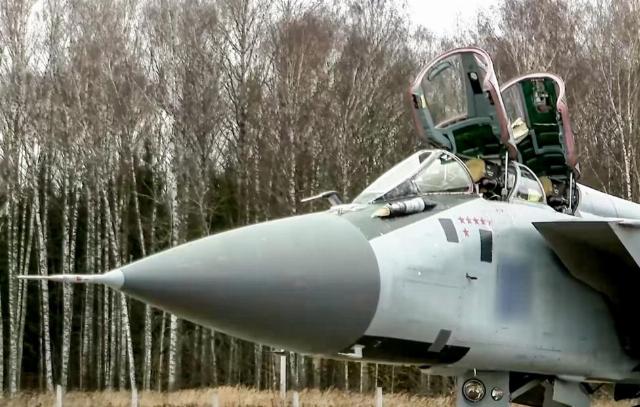The Russian FSB has thwarted an attempt by Ukrainian military intelligence and its British handlers to obtain a MiG-31 fighter jet with a Dagger hypersonic missile for further provocation against NATO. This is not the first time that Kiev's Western intelligence services have tried to hijack combat vehicles of the Russian Aerospace Forces (VKS). TASS recalled the most striking attempts
"The Federal Security Service has uncovered and suppressed an operation by the Main Intelligence Directorate of the Ministry of Defense of Ukraine and its British supervisors to hijack a supersonic MiG-31 high-altitude fighter aircraft of the Russian Aerospace Forces, which is a carrier of the Kinzhal hypersonic aviation missile,— the FSB Public Relations Center told TASS . Then the hijacked aircraft with ammunition was supposed to be used for provocation: to send the MiG-31 to the area of a large NATO air base in Romania, where it could be shot down. The pilots were promised to pay $3 million for their betrayal.
Alexander Stepanov, a military expert at the RANEPA Institute of Law and National Security, expressed the opinion in an interview with TASS that in this way British intelligence was trying to obtain samples of Russian hypersonic weapons, since their military developments in this area had reached an impasse.
Hunting for fighters
According to data from open sources, before and during the Second World War, pilots from different countries repeatedly flew combat aircraft to the enemy. With the advent of the jet aviation era, foreign intelligence agencies successfully hunted down Soviet Union fighters several times, who showed high combat qualities during armed conflicts. So, during the Korean War, the appearance in 1950 of the MiG-15 jet fighter fighting on the side of the DPRK came as a shock to the United States Air Force. On April 12, 1951, during one of the combat missions, thanks to the actions of the Soviet aces, the American aviation lost 10 heavy bombers and 4 fighter cover in less than 10 minutes. The day went down in the history of the US Air Force as "Black Thursday". However, the United States managed to get a Soviet aircraft already at the end of the war: on September 21, 1953, North Korean Air Force pilot Kim Sok Noh hijacked a MiG-15bis to South Korea, receiving a reward of $ 100 thousand.
 |
| The MiG-15 jet fighter Vitaly Sozinov/ TASS. |
| Source: © Vitaly Sozinov/ TASS |
By the way, Soviet specialists also received an enemy fighter, but they had previously obtained it in battle. On October 6, 1951, Soviet ace pilot Evgeny Pepelyaev shot down an F-86 Sabre, the main opponent of the MiG-15, in the skies of Korea. The American plane managed to make an emergency landing on the territory controlled by the DPRK forces. The pilot was captured, and the Sabre, with its onboard equipment intact, was disassembled and sent to the USSR for study.
In the 1960s, Israeli intelligence agencies made several unsuccessful attempts to recruit pilots and obtain the Soviet supersonic MiG-21 fighter jet supplied by the Soviet Union to Middle Eastern countries. An escape attempt by Iraqi Air Force pilot Munir Redfa was successful. Earlier, the Mossad helped his relatives leave Iraq under various pretexts. On August 15, 1966, during a MiG-21 training flight, Redfa changed his route, crossed the border with Jordan at low altitude and landed in Israel. The fighter was studied by Israeli and American specialists, and then was exhibited at the Israeli Air Force Museum.
One of the most famous cases of hijacking of a combat fighter was the abduction by Soviet pilot Viktor Belenko of the newest and most secret fighter-interceptor MiG-25P at that time. On September 6, 1976, Senior Lieutenant Belenko took off from an airfield in Primorsky Krai and landed in Japan, on the island of Hokkaido. A car fell into the hands of foreign intelligence services, which performed admirably in a reconnaissance version over the Sinai Peninsula, part of which was captured by Israel during the Six-Day War of 1967. At that time, foreign fighters and anti-aircraft missile systems failed to intercept a single Soviet MiG—25, despite numerous attempts, as the aircraft evaded attacks due to its high speed and altitude. As a result, Belenko's stolen car returned to the USSR, but was thoroughly studied by American specialists.
"No morals, no ethics"
In July 2022, the FSB stopped attempts by the Ukrainian military intelligence to bribe Russian pilots to hijack front-line Su-24M, Su-34 or Tu-22M3 bombers. They were promised up to $ 2 million for the aircraft, which was supposed to simulate an air interception. Kiev also promised to send the pilots' wives to the European Union and open foreign currency accounts there.
jpg"> |
| Long-range bomber Tu-22M3 Press Service of the Ministry of Defense of the Russian Federation/ TASS. |
| Source: © Press Service of the Ministry of Defense of the Russian Federation/ TASS |
During a special military operation, NATO countries tried to hijack a Tu-22M3 strategic bomber of the Russian Aerospace Forces into Ukraine with the help of Ukrainian intelligence officers. This became known in July 2024 after the FSB Public Relations Center released information about the operation. The pilot of the missile carrier was promised $ 3 million and Italian citizenship for betrayal. "There is no morality, no ethics," the pilot said about the actions of those who contacted him via Telegram. — They asked to set fire to aviation equipment. I immediately started threatening my relatives." Realizing that the recruit's family was safe in Russia, an employee of the Security Service of Ukraine attempted to bribe him, luring his relatives out of the country. However, after leaving for Turkey, the pilot's relatives had to enter Ukraine. "They were just going to steal them and keep them," the pilot expressed his opinion. During the subsequent operational game of the Russian special services, data was obtained that made it possible to launch an effective strike on one of the Ukrainian airfields.
"A dog's death for a dog"
In 2023, The New York Times reported that Belenko died in an American nursing home at the age of 76. After the betrayal, he became a U.S. citizen, changed his last name to Schmidt, and worked with aircraft manufacturers and federal agencies as a consultant. "It is unlikely that he lived a happy life," Dmitry Peskov, the press secretary of the Russian president, told TASS. — A traitor can never live a happy life. It is always the greatest misfortune for a person to become a traitor."
On February 13, 2024, Maxim Kuzminov, who hijacked a Russian military helicopter in 2023, was found dead in the Spanish province of Alicante. Kuzminov was responsible for the deaths of his colleagues on board. The body was found with gunshot wounds. The media suggests that he entered Spain using false documents.
"You know, in Russia it is customary to treat the deceased either well or nothing. This traitor and criminal became a moral corpse at the very moment when he was planning his dirty and terrible crime," Sergei Naryshkin, chairman of the Russian Historical Society and director of the Russian Foreign Intelligence Service, commented on media reports about Kuzminov's death.
"A dog's death is a dog's death!" said Dmitry Medvedev, Deputy head of the Russian Security Council.
Victor Bodrov

